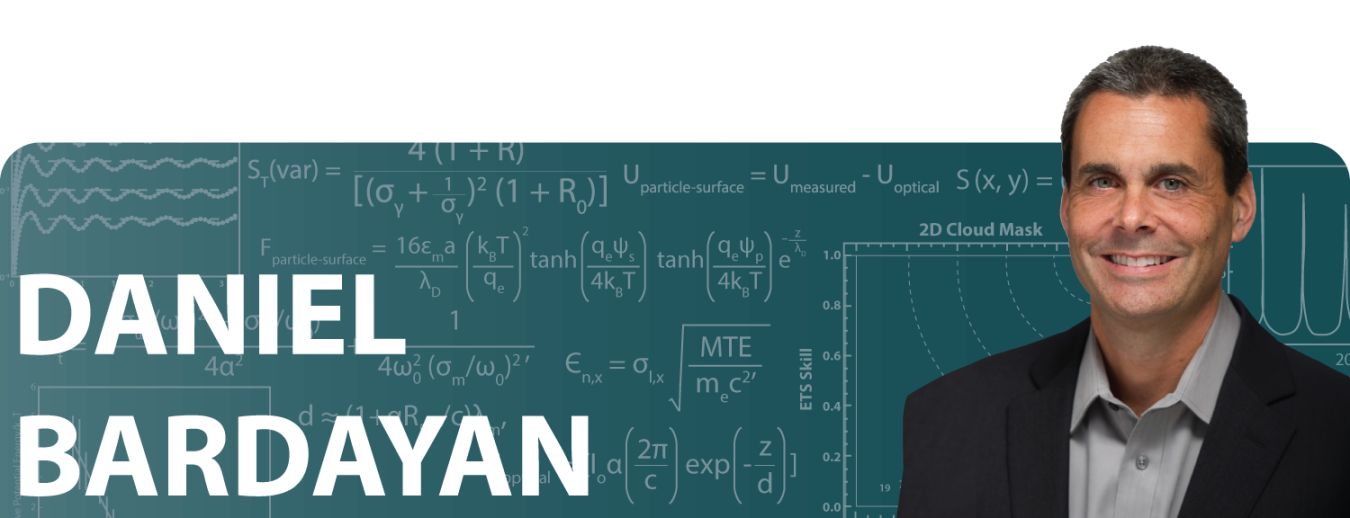University of Notre Dame professor Daniel Bardayan studies the astrophysical reactions that power stellar explosions and make elements.
January 10, 2020
WHAT DID THE 2010 EARLY CAREER AWARD ALLOW YOU TO DO?
The majority of the chemical elements that make up our world were created by nuclear reactions in stars at various stages of their lifetimes. For instance, the calcium in our bones was synthesized more than 4 billion years ago by the explosion of a distant star before being incorporated into our solar system. How these stars ignited, evolved, and ultimately died in events that peppered the Cosmos with their ashes is one of the primary questions of modern science.
The answers lie, in large part, in the nuclear physics that determine the properties and reactions of the nuclei involved. The nuclei involved, however, are not the ones that typically make up our world but are exotic and only live for fleeting moments before spontaneously decaying to something more stable. These exotic nuclei drive the astrophysical explosions that create the elements and, to understand these astrophysical events, we must understand these nuclei and their reactions.
This Early Career Award made possible studies of these very same exotic nuclei via their interactions with a world-unique gas jet of hydrogen and helium, the most abundant nuclei in stars.
ABOUT:
Daniel W. Bardayan is a professor in the Department of Physics at the University of Notre Dame, formerly a senior research staff member in the Physics Division of the Oak Ridge National Laboratory and an adjunct associate professor in the Department of Physics at the University of Tennessee.
SUPPORTING THE DOE SC MISSION:
The Early Career Award program provides financial support that is foundational to young scientists, freeing them to focus on executing their research goals. The development of outstanding scientists early in their careers is of paramount importance to the Department of Energy Office of Science. By investing in the next generation of researchers, the Office of Science champions lifelong careers in discovery science.
For more information, please go to the Early Career Research Program.
THE ORIGINAL PROJECT ABSTRACT:
Studies of Nuclear Reactions that Drive Stellar Explosions and Synthesize the Elements
The origin of the elements in the cosmos and the nuclear reactions that drive stars and stellar explosions involve short‐lived unstable nuclei not normally found on earth. Studies of these topics require accelerator‐based experiments with exotic nuclei such as those available at the Oak Ridge National Laboratory's Holifield Radioactive Ion Beam Facility (HRIBF). This project will combine the exotic beams of HRIBF with a new high-density gas jet target using 3He and 4He to make direct studies of astrophysical reactions and nuclei that power stellar explosions and synthesize the elements. Such a measurement system will be unique in the world and will greatly expand the ability to understand how stars and their spectacular explosions create the elements.
RESOURCES:
D.W. Bardayan, K.A. Chipps, S. Ahn, J.C. Blackmon, R.J. deBoer, U. Greife, K.L. Jones, A. Kontos, R.L. Kozub, L. Linhardt, B. Manning, M. Matos, P.D. O’Malley, S. Ota, S.D. Pain, W.A. Peters, S.T. Pittman, A. Sachs, K.T. Schmitt, M.S. Smith, and P. Thompson, “The first science result with the JENSA gas-jet target: confirmation and study of a strong subthreshold 18F(p,α)15O resonance.” Phys. Lett. B 751, 311 (2015). [DOI: 10.1016/j.physletb.2015.10.073]
D.W. Bardayan, “Transfer reactions in nuclear astrophysics.” J. Phys. G: Nucl. Part. Phys. 43, 043001 (2016). [DOI: 10.1088/0954-3899/43/4/043001]
D.W. Bardayan, K.A. Chipps, S. Ahn, J.C. Blackmon, S. Carmichael, U. Greife, K.L. Jones, J. Jose, A. Kontos, R.L. Kozub, L. Linhardt, B. Manning, M. Matos, P.D. O’Malley, S. Ota, S.D. Pain, W.A. Peters, S.T. Pittman, A. Sachs, K.T. Schmitt, M.S. Smith, and P. Thompson, “Spectroscopic study of 20Ne+p reactions using the JENSA gas-jet target to constrain the astrophysical 18F(p,α)15O rate.” Phys. Rev. C 96, 055806 (2017). [DOI: 10.1103/PhysRevC.96.055806]
DOE Explains… offers straightforward explanations of key words and concepts in fundamental science. It also describes how these concepts apply to the work that the Department of Energy’s Office of Science conducts as it helps the United States excel in research across the scientific spectrum. For more information on nucleosynthesis and DOE’s research in this area, please go to “DOE Explains…Nucleosynthesis.”
Additional profiles of the Early Career Research Program award recipients can be found on the Early Career Program Page.
The Office of Science is the single largest supporter of basic research in the physical sciences in the United States and is working to address some of the most pressing challenges of our time. For more information, please visit www.energy.gov/science.
Sandra Allen McLean

Sandra Allen McLean (sandra.mclean@science.doe.gov) is a communications specialist for the Office of Science in the Office of Communications and Public Affairs. Sandra is responsible for identifying, curating, or creating lay-language content about Office of Science-funded research for DOE web sites, popular and trade media, and stakeholder education. She researches and writes the historical Milestone Tweets for the office Twitter account @DOEScience.
Sandra holds an associate degree in American Sign Language interpreting, a bachelor’s in science journalism and biology, and a master’s in Information Sciences. Her hobbies are sewing – especially costumes! – and lesesucht, compounded by extreme tsundoku.


